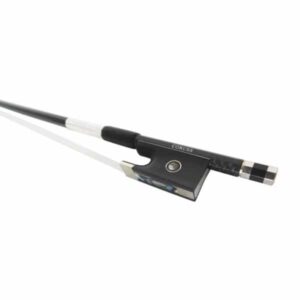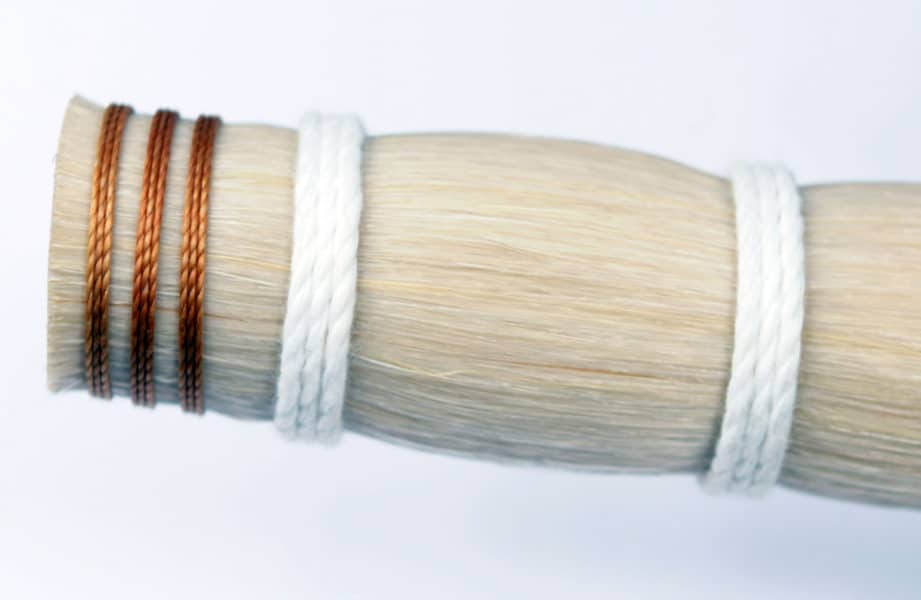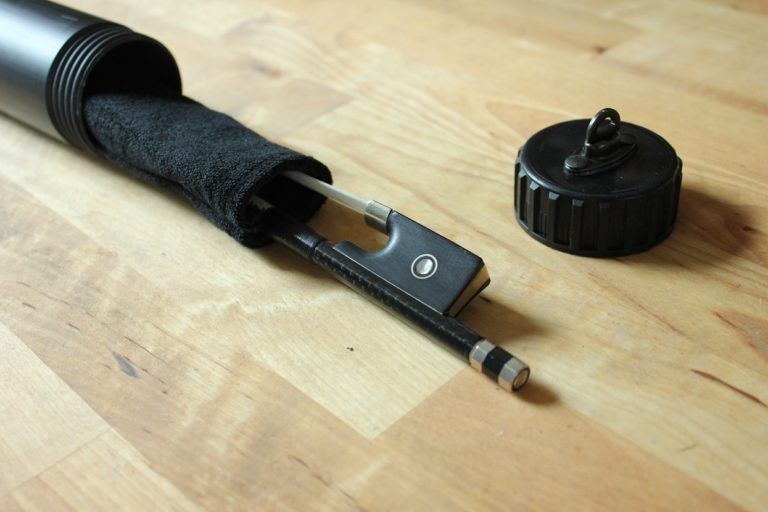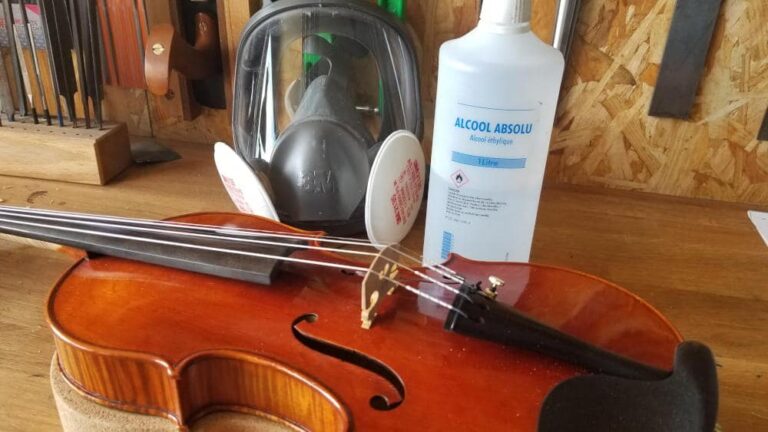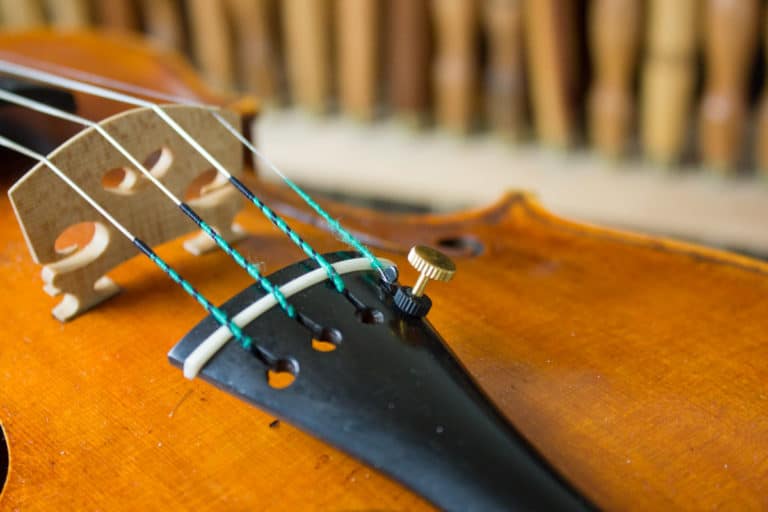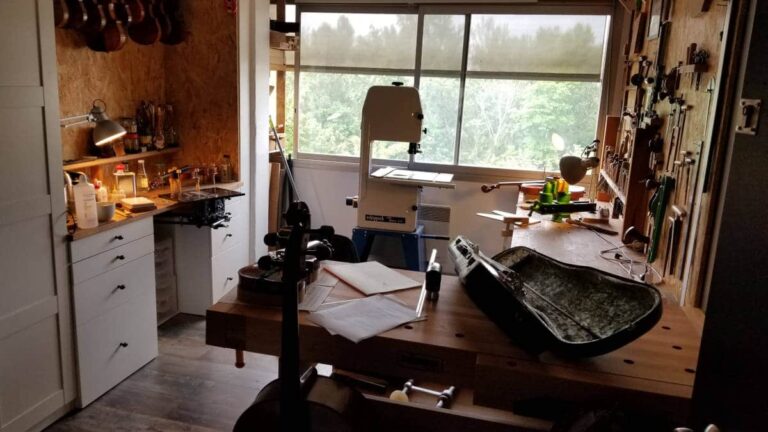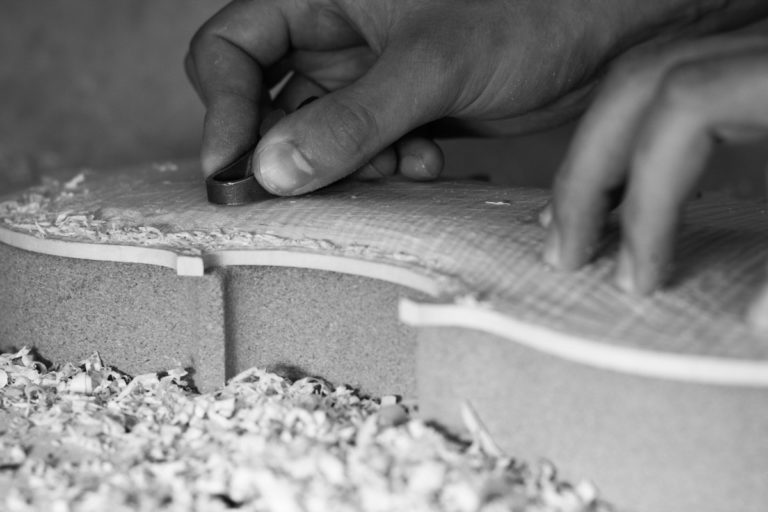sThe violin often takes center stage, presented as the king of instruments. But what would it be without its faithful companion, the bow, whose importance is crucial to the musician's virtuoso expression? In this article, we'll be taking a closer look at where the spark of sound occurs. In fact, the horsehair is the driving force behind the vibration, and it's the horsehair we'll be looking at, from selection to installation! Discover the incredible journey of the wick, from the great steppes of Asia to the great concert halls.
Careful selection of bow hair
Although it's not always true, the horsehair that makes up the strands of bows is a fiber of animal origin. In fact, it is only extracted from horses of certain species living in very specific climatic conditions. But the hair that ends up on your bow undergoes a much stricter selection process.
The hair of very special horses
[pullquote align="right"]
In French, être comme un crin means to be very touchy. So be careful how you treat your hair!
[/pullquote]
Horsehair is harvested mainly from horses bred in Mongolia and Siberia, but sometimes also in Canada. The species native to these very cold climates are particularly hardy, producing thick, resistant hair. Whereas in our more temperate climates, even the most vigorous thoroughbreds would not produce a strong enough coat.
On the other hand, the horsehair used to fill the best wicks used in bow making comes only from stallions. In fact, mares' tail hairs are unsuitable for this purpose. They deteriorate as a result of urine splashes.
What's more, it takes about fifteen years for a horse's tail to grow long enough to fit on a violin bow(80 cm minimum). In healthy older horses, this length can reach up to 150 centimetres!
The strand also has a particular orientation. Since horsehair grows progressively, like our hair, the fibers are older at the tips than at the base. That's why we use the youngest part of the tail on the side of the bow: the area likely to be most used.
About stallion hair
Although only stallion hair is considered suitable for use in bow making. However, it is very rare to come across this type of hair. Horses are bred and horsehair is a by-product of the meat and dairy industries. Under these conditions, mares are more valuable, as they not only provide milk and meat, but also serve to renew the herd. The stallion, on the other hand, serves simply as a sire, and parity is far from necessary in these conditions.
This is why, as in European cattle breeding, where a bull is selected for his genetic characteristics, he ensures the reproduction of dozens of animals. Thestallion who avoids the slaughterhouse to serve as a sire will be quite rare.
That's whywe can assume that we're rarely dealing with real stallion hair. At least, that's what some bow makers think.
A special wick color
[pullquote align="right"]
Less than 5% of the hair harvested is white or beige and can be used for rehairing bows.
[/pullquote]
As if the choice wasn't already limited enough, only three colors are used:
- White
- Pepper and salt
- Black
Generally speaking, the darker the hair, the coarser it is, resulting in better grip on the lower strings. White is the finest hair and is found mainly on violins, violas and cellos. Black horsehair is almost exclusively reserved for double bass bows. The salt-and-pepper version also exists as a compromise suitable for some musicians.
As for the best horsehair used in bow making, it is never dyed or bleached. As a result, some variations in color tone can be observed. However, some of the strands used in low-quality bows undergo chemical baths to bleach them. But these operations considerably degrade their quality, which is why luthiers and musicians refuse them.
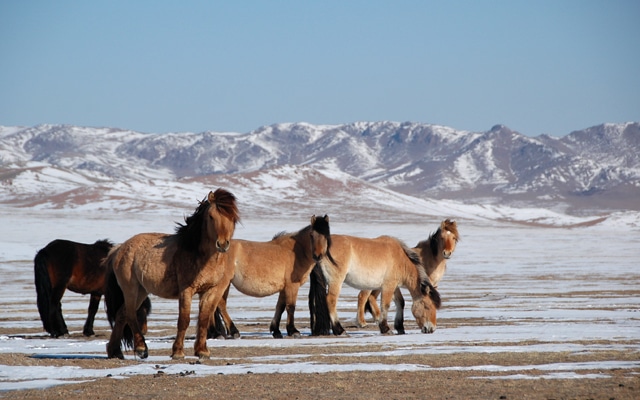
Only a few will end up on the bows
[pullquote align="right"]
The horsehair on our bows comes from slaughterhouses, not from live animals. It is in fact a by-product of food production, since 12kg of horsemeat per capita is produced annually in Mongolia, compared with 110g in France.
[/pullquote]
After harvesting, workers inspect each hair individually, sorting it according to color, length and quality. In this way, a rigorous selection is made, discarding the majority of fibers. As a result, for a ponytail, only around 50g of usable horsehair will remain, the equivalent of about five bow remakings. The most obvious imperfections can be quickly removed, but the luthier or bow maker will have to carry out a final check before rehairing to ensure the quality of his batch.
In fact, only a tiny fraction of horsehair is used in bow making. Most of it will be used in crafts to produce objects such as :
- Furniture and bedding
- Woven jewelry
- Clothing
- Textiles
- Brushes and brushes
- Creating patterns in Raku
- Making fishing bait
An overview of the horsehair selection process
[kad_youtube url="https://www.youtube.com/watch?v=dac8_g0UNnY "]
The art of bow making
First of all, it's worth remembering that the horsehair used in bows does not last forever. As explained in this article(When to resharpen a bow?), from time to time you'll need to replace the wick. When you know how critical the choice of bit is to the sound of your violin, viola or cello, you immediately become very demanding of the person who performs this operation. In fact, there's no point asking for it in a music store. You can only turn to luthiers or bow makers who are competent in their field. However, not all of them offer rehairing services.
In any case, re-wicking involves many controllable parameters. It may be difficult to know what is and isn't possible with a different wick, but don't hesitate to experiment. The result could be surprising! You can always ask your questions at a workshop near you.
Feel free to share your own experience in comments!
Synthetic horsehair
Synthetic fibers offer a new alternative to natural horsehair. It's an option that has many detractors, who accuse it of not providing the same results as their animal version. However, like carbon instruments or bows, it's just a different product... Nevertheless, it is attracting a great deal of interest from musicians because of its stability and consistency.
On the other hand, animal lovers will welcome the opportunity of no longer having to use an animal fiber on their bow. If you'd like to find out more about synthetic horsehair, take a look at Coruss horsehair.
